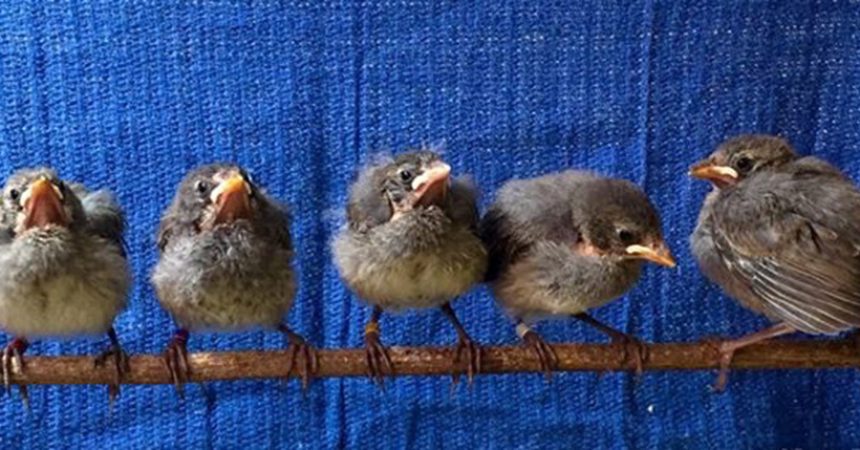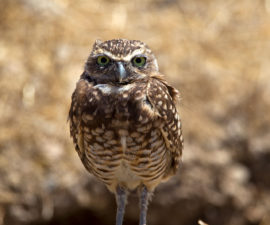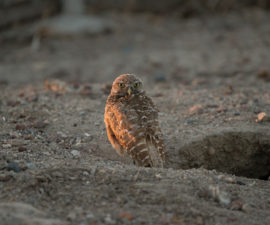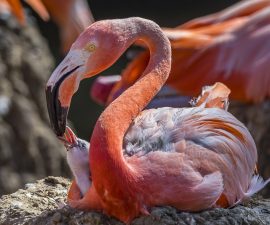In spring of 2016, bird keepers from the San Diego Zoo’s Avian Propagation Center traveled to the Galápagos to participate in the third season of our captive rearing project for mangrove finches. One of the famed “Darwin’s finches,” the mangrove finch population had been decimated by predation and parasitism by invasive species. At the onset of the captive rearing project, the population was estimated to be as low as 60 total birds residing in two small patches of habitat on the west coast of Isla Isabela.
Because the captive rearing facility is on an entirely different island (Santa Cruz), chicks must be raised in quarantine conditions to ensure that they don’t carry any diseases back to Isabela when they are released. Logistically, it is impossible to send each young finch back to Isabela as soon as it is ready. The oldest of the chicks must wait for the rest of their comrades to form a cohort that is large enough to transport. In the meantime, they can grow inquisitive and restless…as many adolescent animals do!
This curious nature is essential for the birds to learn to forage in the dense mangroves after they are released. Until then, keepers provide enrichment and encourage the chicks’ curiosity. Due to the quarantine conditions of the hand-rearing facility, they must use materials already on hand and choose carefully. That means no leaves, trees, tree branches, native bugs, or even dirt for the birds to learn to dig, pull, and tear apart. Resourceful keepers and volunteers used cardboard boxes and tubes, shredded paper, paper towels, newspaper, and paper plates (sometimes with the finches’ favorite treats hidden inside) to create simulated foraging opportunities (aka “toys”) for the young birds.
The improvised enrichment kept the young chicks thoroughly entertained, and watching the young birds grow and learn was also enriching for the staff! Personality differences between the finches emerged. Green/Pink (the colors of her leg bands) was the brave one. She was always the first to check out new enrichment items, and the rest slowly followed her lead. Yellow/Blue was the most persistent, never resting until the items were fully deconstructed.
When all of the birds were finally old enough, they were transported to specially built release aviaries in the mangrove forest on Isabela. There, the cardboard tubes and paper towels were replaced with natural foraging materials like leaves, shredded bark and rotting logs and the eager young finches took to exploring these exciting new items without missing a beat.
During the 2016 field season, 15 captive-reared mangrove finches were released back into the mangrove on Isabela, raising the total for the first 3 years of the program to 38 birds. For a population that was once as low as 60, that’s a huge boost!
Also in 2016, three captive-reared finches from previous seasons were seen foraging in the mangrove. This is an encouraging sign that captive-reared finches are surviving in the wild, especially considering that their cryptic nature makes them difficult to observe before they begin singing and breeding at three or four years old. For the birds released in 2014, that could happen this coming spring, making the 2017 season an especially noteworthy one for the program.
Beginning in January 2017, the San Diego Zoo will be sending keepers to the Galápagos for another season working to prevent the extinction of the mangrove finch.
Ann Knutson is a senior keeper at the San Diego Zoo. Read her previous blog, Be Their Voice.





